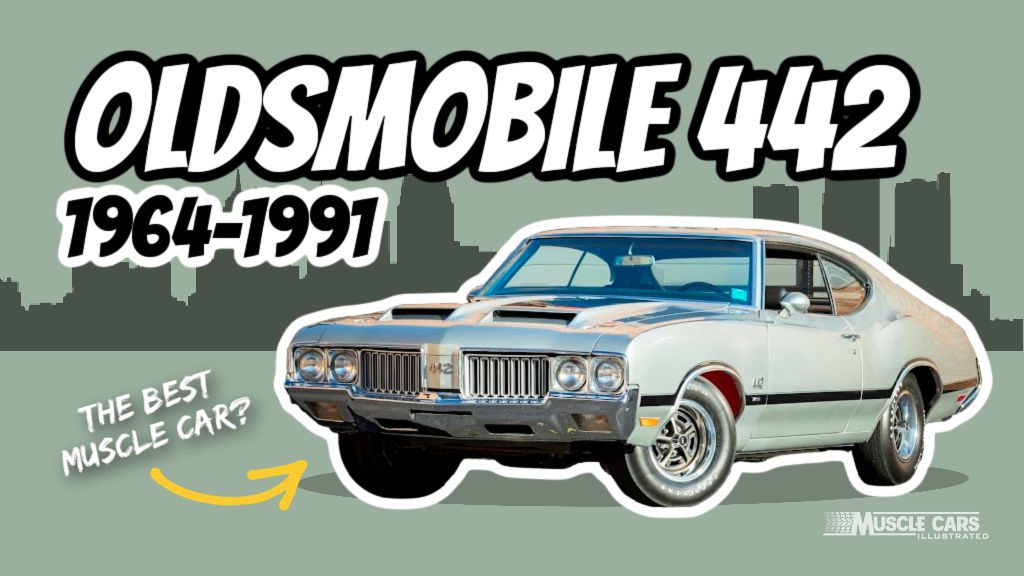
The Oldsmobile 4-4-2 captivated the hearts of automotive enthusiasts with its performance, style, and legacy. Join us on this exhilarating ride as we explore the evolution of the 4-4-2, uncovering the innovations, unforgettable features, and the undeniable allure of Doctor Oldsmobile’s creation.
Table of Contents
Oldsmobile 442 Highlights
| Year | Key Features |
|---|---|
| 1964 | The first year of production; is based on the Cutlass platform with a 330-cubic-inch V8 engine, a four-speed manual transmission, and a special handling package. |
| 1968 | The 4-4-2 received a new body style and a new 455-cubic-inch V8 engine as an option. |
| 1969 | The 455-cubic-inch V8 engine became the standard, and the W-30 package continued. |
| 1970 | The W-30 Forced Air Induction package was introduced. |
| 1974 | The 4-4-2 became an option package on the Cutlass Supreme model, with the 455-cubic-inch V8 engine as an option. |
| 1975+ | Scroll down to the “1975 and Beyond” section for these highlights. |
The Rise and Fall of the Oldsmobile 4-4-2
The Oldsmobile 4-4-2, affectionately known as the Four-Four-Two, was a performance-oriented muscle car born from the F-85 and Cutlass models. Introduced in 1964, the 4-4-2’s name represented its original configuration: a four-barrel carburetor, four-speed manual transmission, and dual exhaust.
The 4-4-2 underwent numerous changes and improvements throughout the decade, with the legendary W30 package becoming synonymous with high performance. However, as is the case with many good things, it eventually came to an end.
Let’s look closer at the Oldsmobile 4-4-2 and see how it evolved over the years, shall we?
First Generation: 1964-1967
The first generation of the Oldsmobile 442 started in 1964 as an option package for the F-85 and Cutlass models, aiming to compete with Pontiac’s GTO. A 330-cylinder V8 engine powered it. The following year, the engine was upgraded to a 400-cylinder and became a separate model with a new 442 badge. In 1966, the 442 had suspension upgrades and introduced the W-30 performance option. In 1967, GM banned triple carburetor options, and Oldsmobile responded with the L66 and the popular W-30, which featured a forced-air induction system.
1964 Olds 442

The 1964 Oldsmobile 4-4-2 marked the beginning of an era. This model year featured a 330 cubic-inch V8 engine, producing 310 horsepower. The 4-4-2 adopted the stylish design of the Cutlass and F-85 body styles, adding trumpet exhaust tips that would become a hallmark of the model.
The 1964 4-4-2 offered several performance enhancements, including heavy-duty suspension, a Muncie 4-speed manual transmission, and a Positraction rear axle. These features contributed to the 4-4-2’s standing quarter-mile time of around 15.5 seconds. Car Life magazine (August ’64) clocked a 330 CID V8 4-4-2 at 15.8 seconds in a quarter-mile at 89 mph, making it the sixth fastest muscle car in 1964.
Production numbers for the first year were limited, with only 2,999 units assembled across the Lansing, MI, Framingham, MA, and Fremont, CA, plants. Although the W30 package had not yet been introduced, the 1964 4-4-2 laid the foundation for the legend that would follow.
- Wheelbase: 115 inches
- Curb Weight: Approx. 3,500 lbs
- Number Built: 2,999
- Body Length: 203 inches
- Base Price: $2,999
1964 Production Figures
| Body Style | Production Numbers |
|---|---|
| F-85 Club Coupe | 148 |
| F-85 4-Door Sedan | 3 |
| F-85 Deluxe 4-Door | 7 |
| Cutlass Sport Coupe | 563 |
| Cutlass Holiday | 1,842 |
| Cutlass Convertible | 436 |
| Total | 2,999 |
1965 Olds 442
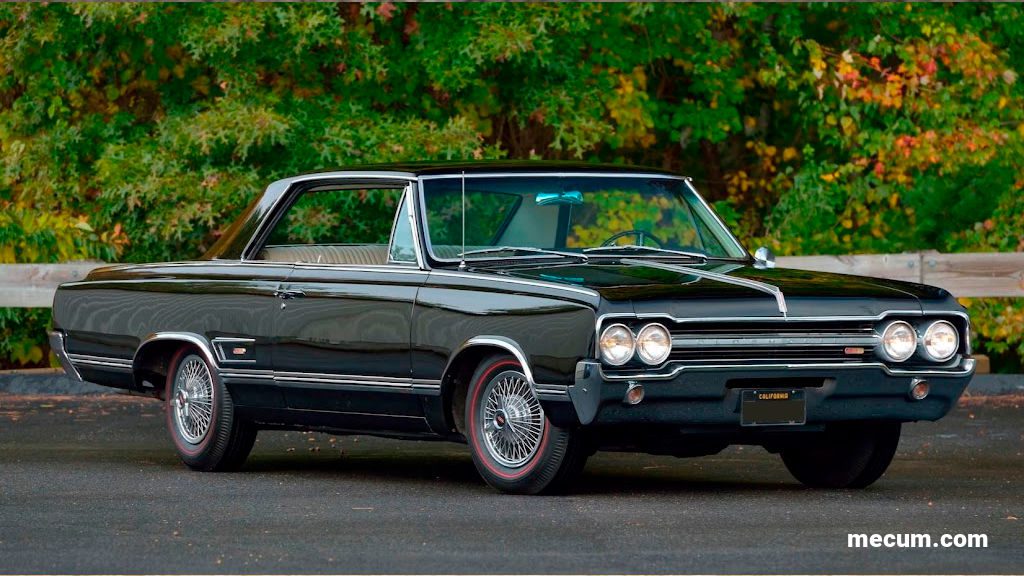
In 1965, the Oldsmobile 4-4-2 received a significant upgrade in performance thanks to a 400 cubic-inch V8 engine producing 345 horsepower. This year’s model also introduced the optional automatic transmission, catering to a broader range of drivers. The May ’65 issue of Car & Driver recorded a 15-second quarter-mile at 98 mph, ranking the 4-4-2 as the fourth fastest muscle car in 1965.
Styling changes for the 1965 4-4-2 included revised grilles, new tail lights, and restyled wheel openings. The interior was improved with upgraded upholstery and a more refined dashboard design. Super stock wheels became popular, giving the 4-4-2 an even more aggressive look.
Production numbers surged in 1965, reaching 25,003 units. Though the W30 package had not yet been introduced, the 1965 4-4-2 continued to build on the performance foundation set by its predecessor, solidifying its position as a fierce competitor to the Pontiac GTO.
- Wheelbase: 115 inches
- Curb Weight: Approx. 3,600 lbs
- Number Built: 25,003
- Body Length: 204.3 inches
- Base Price: $3,063
1965 Production Figures
| Body Style | Production Numbers |
|---|---|
| F-85 Club Coupe | 1,087 |
| Cutlass Sport Coupe | 5,713 |
| Cutlass Hardtop | 14,735 |
| Cutlass Convertible | 3,468 |
| Total | 25,003 |
1966 Olds 442

The 1966 4-4-2 model year introduced several new features and options, reinforcing its status as a performance icon. The 400 cubic-inch V8 engine now produced up to 360 horsepower with the addition of the L69 tri-carburetor option. The W30 package debuted in 1966, transforming the base 4-4-2 into a high-performance machine with a special camshaft, cylinder heads, and a unique air induction system. Only 502 were built.
Performance options for the 1966 model year included a limited-slip differential and heavy-duty suspension. A 4-4-2 W30 sprinted a 13.80-second quarter-mile at 105.2 mph in the 8/88 issue of Car Craft, becoming the fastest muscle car in 1966, further bolstering its reputation as a true muscle car.
Production numbers for the 1966 model year reached 21,997 units. The 1966 4-4-2’s styling remained unchanged, except for minor grille and trim updates.
- Wheelbase: 115 inches
- Curb Weight: Approx. 3,600 lbs
- Number Built: 21,997
- Body Length: 204.5 inches
- Base Price: $3,200
1966 Production Figures
| Body Style | Production Numbers |
|---|---|
| F-85 Club Coupe | 647 |
| F-85 Hardtop | 1,217 |
| Cutlass Coupe | 3,787 |
| Cutlass Hardtop | 13,493 |
| Cutlass Convertible | 2,853 |
| Total | 21,997 |
1967 Olds 442
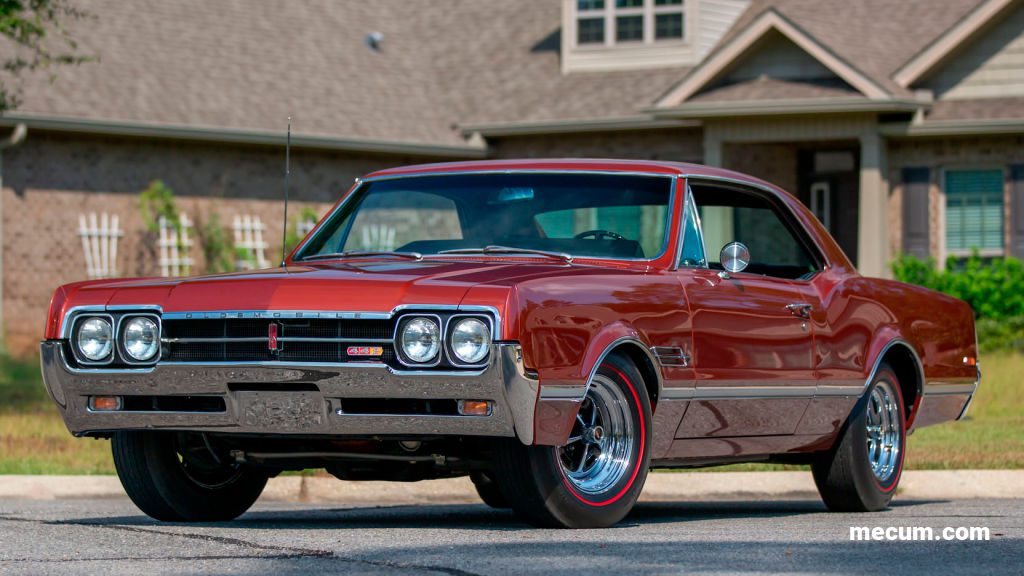
Oldsmobile introduced a tri-carb setup, but GM banned it for all its divisions. However, Oldsmobile came up with two new engine options for the 4-4-2: the “Turnpike Cruising package” and the W-30 package, which included a forced air induction system with special air ducts, fan shroud, camshaft, heavy duty springs, chrome valve covers, and an air induction air cleaner.
The 1967 4-4-2 introduced new safety features, such as an energy-absorbing steering column and a dual master cylinder braking system. Styling changes included a revised grille, new side marker lights, and sleeker body lines. The 4-4-2 package was now only available on the higher-priced Cutlass models, offering comfort and performance.
The W30 package continued to offer an additional performance boost with its unique air induction system, camshaft, and cylinder heads. The base 400 cubic-inch V8 engine produced 350 horsepower (L78), while the W30 option pushed it to 360 horsepower (L77) for 502 owners. Hot Rod magazine (March ’67) reported a 4-4-2 W30’s 13.92-second quarter-mile at 104 mph, making it the second fastest muscle car in 1967.
Production numbers remained steady, with 24,827 units produced in 1967. The 4-4-2 was available in convertible, hardtop, and coupe body styles, appealing to a diverse range of muscle car enthusiasts.
- Wheelbase: 115 inches
- Curb Weight: Approx. 3,700 lbs
- Number Built: 24,827
- Body Length: 203.2 inches
- Base Price: $3,300
1967 Production Figures
| Body Style | Production Numbers |
|---|---|
| Cutlass Coupe | 4,750 |
| Cutlass Hardtop | 16,998 |
| Cutlass Convertible | 3,079 |
| Total | 24,827 |
Second Generation: 1968-1972
The second generation of the Oldsmobile 442 spanned from 1968 to 1972. In 1968, the 442 became its own model line, and the Hurst/Olds was introduced with a 455-cylinder V8 engine. In 1969, the W-30 returned, and the Hurst/Olds was updated with a new gold and white color scheme. In 1970, the 442 reached its peak performance with the addition of the powerful 455-cylinder V8 engine, and the W-30 option received significant upgrades. In 1971, GM’s crackdown on performance standards decreased horsepower, and the Rallye 350 and W-31 were dropped. In 1972, the 442 returned as an appearance package on the V8 Cutlass, but the Hurst/Olds and W-30 options remained available.
1968 Olds 442
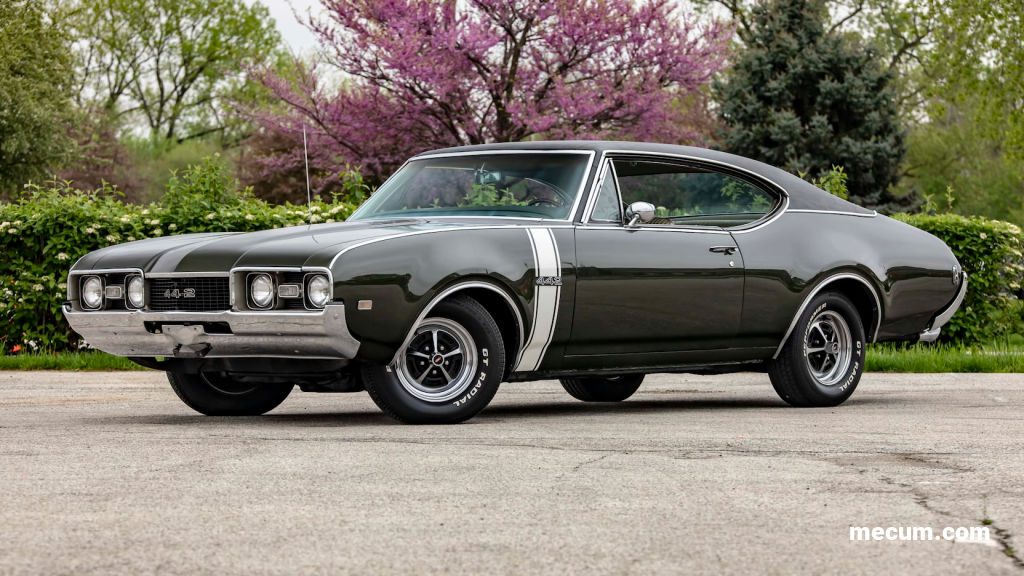
The 1968 4-4-2 brought about significant design changes, adopting the GM A-body platform. This redesign featured a shorter wheelbase, a more aggressive stance, and a semi-fastback roofline for a sportier look.
The base 400 cubic-inch V8 engine output remained at 350 horsepower (L75), while the W30 package delivered 360 horsepower. Other performance options included a new Hurst/Olds shifter, which enhanced the driving experience. With a 400 CID V-8 W30 engine producing 360-HP and 440 lb-ft of torque, Popular Hot Rodding (May ’68) noted a 14-second quarter-mile at 99 mph, ranking it the tenth fastest muscle car in 1968.
Production numbers increased to 33,607 units in 1968, reflecting the growing popularity of the Oldsmobile 4-4-2. This year’s model continued to offer the W30 package on only 1,911 vehicles, making it a sought-after choice for performance enthusiasts.
- Wheelbase: 112 inches
- Curb Weight: Approx. 3,600 lbs
- Number Built: 33,607
- Body Length: 201.9 inches
- Base Price: $3,127
1968 Production Figures
| Body Style | Production Numbers |
|---|---|
| Sports Coupe | 4,282 |
| Holiday Hardtop | 24,183 |
| Convertible | 5,142 |
| Total | 33,607 |
1969 Olds 442
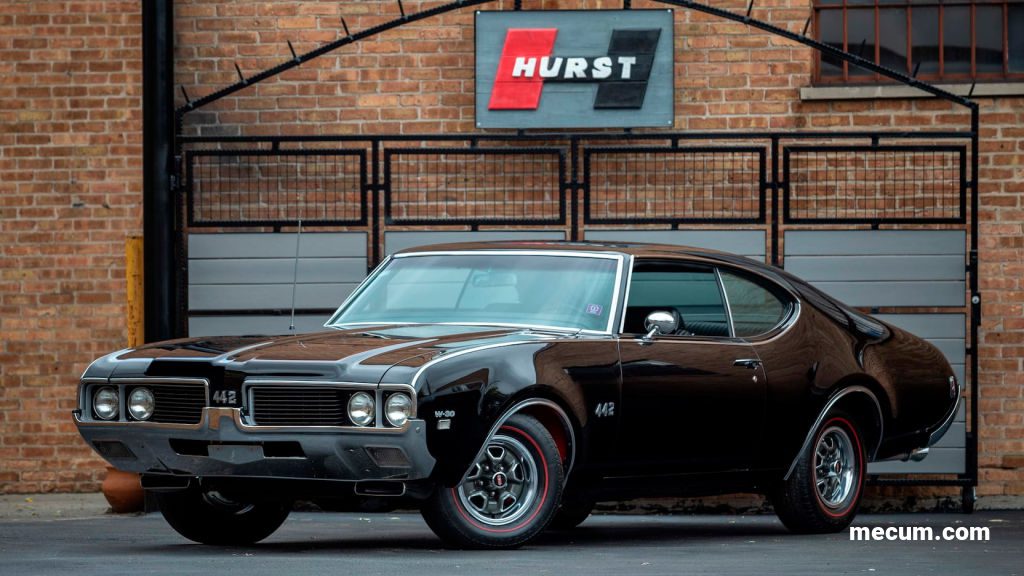
In 1969, the 4-4-2 featured a new grille design and the introduction of several “W” options. The W-30 option returned with its Force Air induction and below-bumper intakes. Additionally, the W32 option replaced the “Turnpike Cruiser” option and included a detuned Force Air induction engine.
The 1969 model year brought minor cosmetic changes to the 4-4-2, such as a revised grille, new tail lights, and updated side markers. The base 400 cubic-inch V8 engine received a boost in compression, raising the horsepower to 365.
The W30 package remained popular, now featuring functional Ram Air induction, a fiberglass hood, and a distinctive under-bumper air intake. This package continued to provide a 360 horsepower output and enhanced performance capabilities.
A total of 26,358 Oldsmobile 4-4-2s were produced in 1969, with the W30 package remaining a desirable option for those seeking the ultimate in muscle car performance. Oldsmobile built 2,475 W30s this year.
- Wheelbase: 112 inches
- Curb Weight: Approx. 3,600 lbs
- Number Built: 26,358
- Body Length: 201.9 inches
- Base Price: $3,167
1969 Production Figures
| Body Style | Production Numbers |
|---|---|
| Sports Coupe | 2,475 |
| Holiday Hardtop | 19,587 |
| Convertible | 4,296 |
| Total | 26,358 |
1970 Olds 442
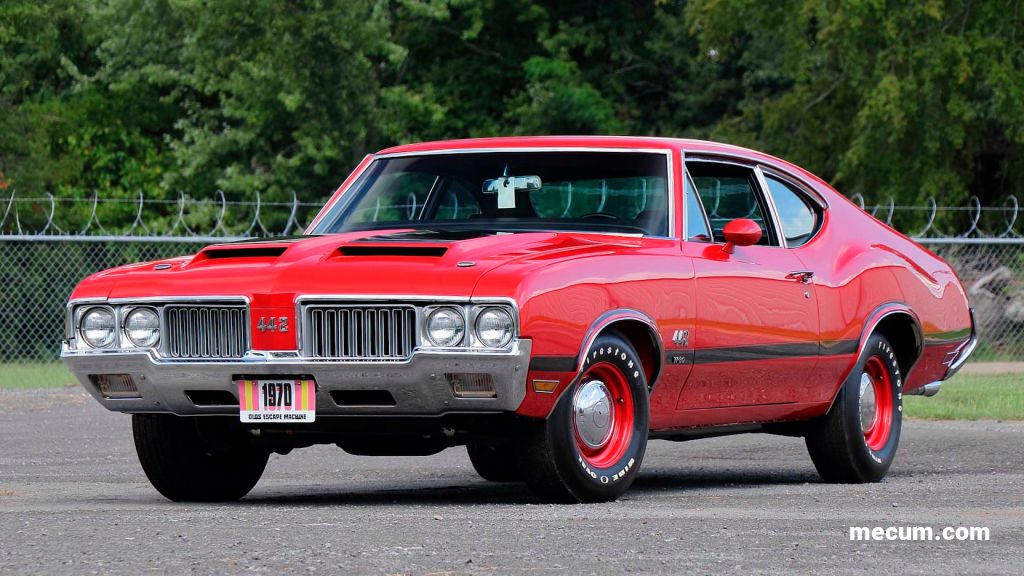
1970 saw the lifting of GM’s ban on engines greater than 400 cid installed in midsize cars. Although Oldsmobile had gotten around that rule in 1968 and 1969 through the Hurst/Olds, this now enabled Oldsmobile to offer its 455 cid V8 in all 4-4-2s. The Hurst/Olds was dropped from the lineup and reappeared in 1972.
The 1970 4-4-2 saw a major upgrade under the hood with the introduction of the powerful 455 cubic-inch V8 engine. This engine produced an impressive 365 horsepower in the base model and a staggering 370 horsepower with the W30 package. A 70 W30 442 clocked a 13.89-second quarter-mile at 101.1 mph in the April ’70 issue of Popular Hot Rodding, making it the tenth fastest muscle car in 1970.
Styling changes for the 1970 model year included a revised front end, new grilles, and rectangular headlamps. The W30 package also received a new air induction system, further improving performance.
A total of 19,330 units were produced in 1970, with the W30 package continuing to attract 3,100 performance enthusiasts who wanted the most powerful 4-4-2 available.
- Wheelbase: 112 inches
- Curb Weight: Approx. 3,600 lbs
- Number Built: 19,330
- Body Length: 203.2 inches
- Base Price: $3,341
1970 Production Figures
| Body Style | Production Numbers |
|---|---|
| Sports Coupe | 1,688 |
| Holiday Hardtop | 14,709 |
| Convertible | 2,933 |
| Total | 19,330 |
1971 Olds 442
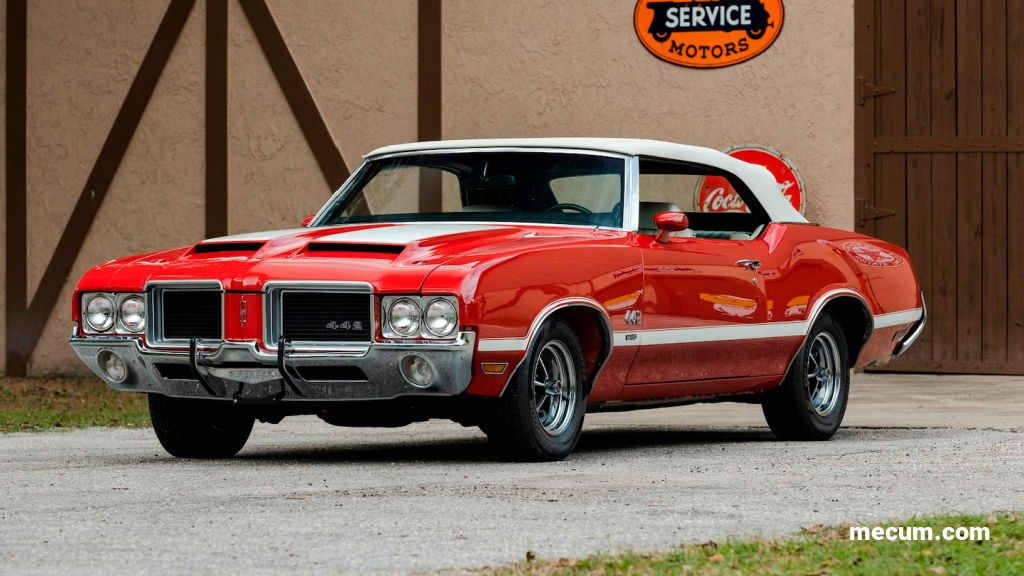
In 1971, all muscle cars, including the 4-4-2, started to decline. As per GM’s directive, all engines had to run on unleaded fuel, reducing compression and power ratings.
The 1971 4-4-2 experienced a reduction in power due to stricter emissions regulations, with the base 455 cubic-inch V8 engine producing 340 horsepower. However, the W30 package continued to push boundaries, offering 350 horsepower and a more aggressive camshaft profile on 110 units. The 455 CID V8, generating 350-HP and 460 lb-ft of torque, enabled a 13.90-second quarter-mile at 101 mph, as documented by Supercar Magazine, ranking it as the tenth fastest muscle car in 1971.
Styling changes in 1971 included a restyled front end, new bumpers, and updated grilles. Production numbers for the 1971 model year dipped to 7,589 units, reflecting the impact of emissions regulations on the muscle car market. Nevertheless, the Oldsmobile 4-4-2 maintained its status as a formidable performance vehicle.
- Wheelbase: 112 inches
- Curb Weight: Approx. 3,800 lbs
- Number Built: 7,589
- Body Length: 204.6 inches
- Base Price: $3,509
1971 Production Figures
| Body Style | Production Numbers |
|---|---|
| Hardtop | 6,285 |
| Convertible | 1,304 |
| Total | 7,589 |
1972 Olds 442
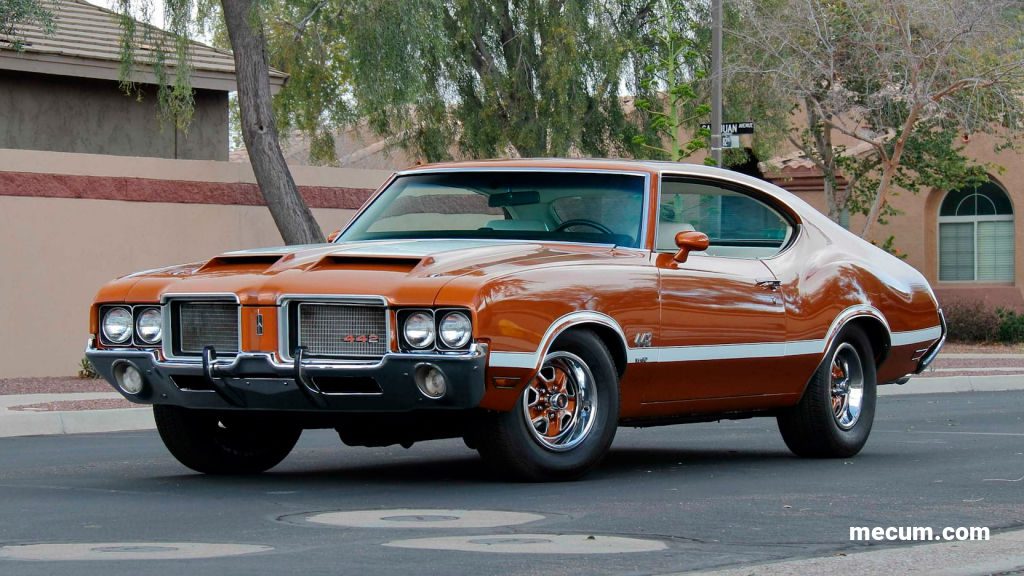
In 1972, due to the decline in demand for high insurance-cost muscle cars, the 4-4-2 returned to being an option on the Cutlass models. It became a handling and appearance package for any V8 Cutlass, featuring heavy-duty suspension, wheels, and other appearance items.
The 1972 4-4-2 saw further reductions in horsepower due to tightening emissions standards, with the base 455 cubic-inch V8 engine now producing 300 horsepower. Additionally, the “net rating” method of rating engines, which accounted for all accessories, replaced the previous “gross” rating system, leading to significant changes.
The W30 package was still available, offering 310 horsepower and the iconic Ram Air induction system to 772 performance enthusiasts. In the August ’72 issue of Hi-Performance Cars magazine, a 4-4-2 W-30 achieved a 14.37-second quarter-mile at 98 mph, making it the second-fastest muscle car in 1972.
Styling remained mostly unchanged for the 1972 model year, with only minor front and rear bumpers adjustments. The 4-4-2 continued to be offered in convertible, hardtop, and coupe body styles.
Production numbers for the 1972 4-4-2 totaled 9,845 units. Despite the decline in power, the Oldsmobile 4-4-2 remained popular among muscle car enthusiasts seeking a balance of performance and style.
- Wheelbase: 112 inches
- Curb Weight: Approx. 3,800 lbs
- Number Built: 9,845
- Body Length: 204.6 inches
- Base Price: $3,600
1972 Production Figures
| Body Style | Production Numbers |
|---|---|
| Cutlass Hardtop | 751 |
| Cutlass S Coupe | 123 |
| Cutlass S Hardtop | 7,800 |
| Cutlass Supreme | 1,171 |
| Total | 9,845 |
Third Generation: 1973-1977
As performance standards and government regulations impacted the Oldsmobile 442, it evolved into an appearance and balance package. The W-29 remained an option exclusive to the Cutlass lineups in 1973, and the 442’s horsepower continued to decline due to emissions standards. The W-30 code returned in 1974 with a new Rocket 455 engine, and the dual exhausts were removed in 1975. The 442 received exterior changes in 1976, the last year with the Colonnade body in 1977. Limited edition versions of the 442 and Hurst/Olds were available in 1978 and 1979 with a focus on appearance options.
1973 Olds 442
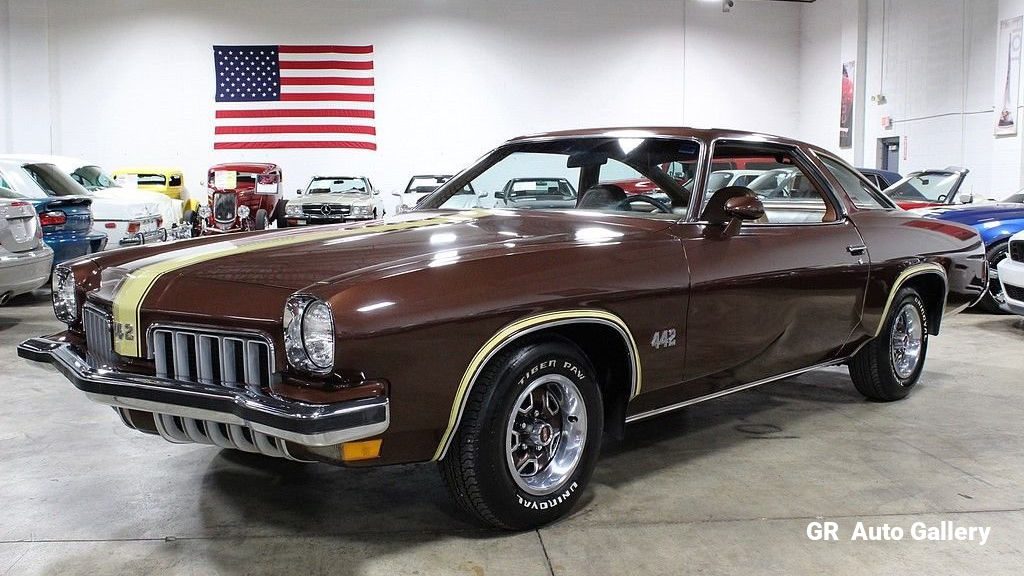
In 1973, the Cutlass underwent a significant redesign with new sheet metal and a more European appearance, adopting the GM Colonnade body style. The 4-4-2 package was now called the W-29 option and was only available on the Cutlass and Cutlass S coupes. It included the same handling and appearance features as the previous year. The W-30 option was discontinued, leaving only the Hurst/Olds as the performance model.
This new design featured a more angular appearance, frameless door glass, and a reinforced roof structure. The base 455 cubic-inch V8 engine continued to produce 300 horsepower. The W30 package was discontinued after the 1972 model year, marking the end of an era for the high-performance Oldsmobile 4-4-2. Nonetheless, the 1973 model remained a popular choice among muscle car fans, all things considered. The April ’73 issue of Hi-Performance magazine reported a 73 4-4-2’s 14.90-second quarter-mile at 97.3 mph, ranking it the fourth fastest muscle car in 1973.
Production numbers for the 1973 4-4-2 reached 9,797 units. Although the W30 package was no longer available, the 4-4-2 offered a compelling combination of performance and style.
- Wheelbase: 112 inches
- Curb Weight: Approx. 3,800 lbs
- Number Built: 9,797
- Body Length: 204.8 inches
- Base Price: $3,800
1973 Production Figures
| Body Style | Production Numbers |
|---|---|
| Cutlass Coupe | 251 |
| Cutlass S Coupe | 9,546 |
| Total | 9,797 |
1974 Olds 442
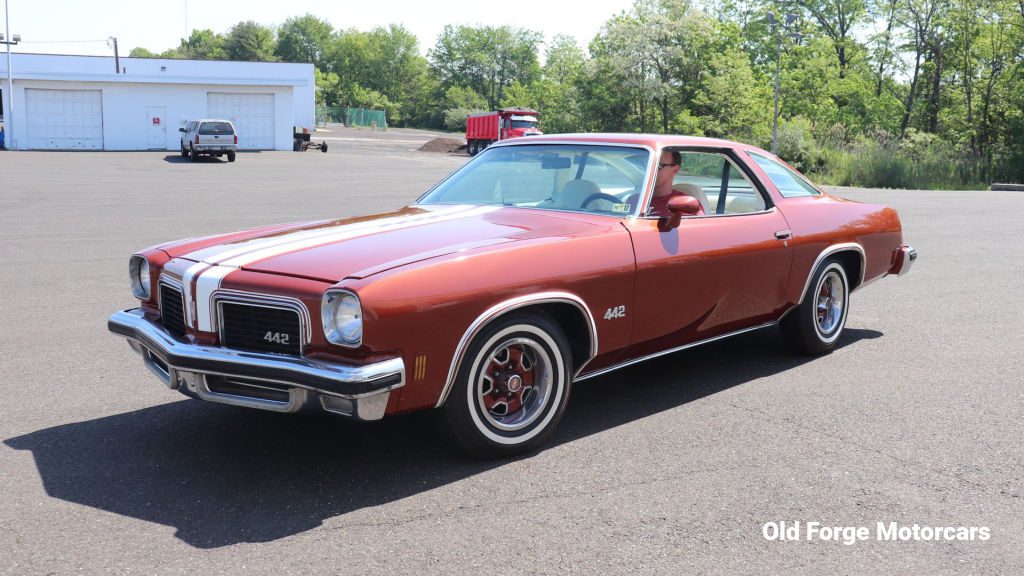
The 1974 Oldsmobile 4-4-2 marked the end of a legendary era for American muscle cars. The 455 cubic-inch V8 engine now produced 275 horsepower, reflecting the ongoing effects of emissions regulations on performance.
Styling changes for the 1974 model year were minimal, with the most significant update being the incorporation of larger, impact-absorbing bumpers to comply with new federal safety regulations.
Production numbers for the final year of the Oldsmobile 4-4-2 totaled 7,204 units. As the curtain closed on this iconic era, the Oldsmobile 4-4-2 left a lasting legacy in the annals of American automotive history.
- Wheelbase: 112 inches
- Curb Weight: Approx. 3,800 lbs
- Number Built: 7,204
- Body Length: 206.1 inches
- Base Price: $4,025
1974 Production Figures
| Body Style | Production Numbers |
|---|---|
| Cutlass Coupe | 245 |
| Cutlass S Coupe | 6,959 |
| Total | 7,204 |
1975 and Beyond

As the sun set on the classic muscle car era with the 1974 Oldsmobile 4-4-2, a new chapter dawned for this legendary nameplate. Starting from 1975, the 4-4-2 underwent a series of transformations, adapting to changing consumer preferences and industry regulations while maintaining its performance-oriented pedigree. Though it would never quite recapture its initial decade’s raw power and excitement, the Oldsmobile 4-4-2 continued to evolve and forge a lasting legacy in the automotive world. The fifth generation of 442’s from
| Model Year | Milestone |
|---|---|
| 1975 | 4-4-2 became an option package for Cutlass S, with a standard 350 cubic inch V8 and an optional 455 cubic inch V8. |
| 1976 | 4-4-2 package streamlined, focusing on appearance upgrades like decals, stripes, and a rear spoiler. |
| 1977 | 4-4-2 is offered as an option package on Cutlass S, with engine options ranging from 260 cubic inch to 403 cubic inch V8. |
| 1978 | Start of the fourth generation. 4-4-2 moved to a fastback Cutlass Salon body, offering a unique aerodynamic package inspired by NASCAR. |
| 1979 | Limited-edition Hurst/Olds 4-4-2 introduced, featuring 350 ci V8 engine and distinct paintwork. |
| 1980 | Last year of the 4-4-2 and fourth generation until it was revived in 1985. |
| 1985-1987 | The fifth generation 4-4-2 returned as an option package on the Cutlass Salon, with high-output 307 ci V8 and a unique appearance package. In 1987, the body style was switched to the Cutlass Supreme. |
| 1990-1991 | The sixth generation was revived and discontinued as a front-wheel drive model on the Quad 4 engine in the 1990-1991 Cutlass Calais, ending the journey for one of America’s most iconic performance nameplates. |
Conclusion
The Oldsmobile 4-4-2 enjoyed a long run as one of America’s best muscle cars, leaving an indelible mark on the automotive world. The model’s evolution from its inception in 1964 to its final year in 1974 showcased the innovation, performance, and style that defined the golden era of American muscle.
From its powerful V8 engines to continuing the legendary W30 package, the Oldsmobile 4-4-2 set the standard for performance-oriented vehicles of its time. Assembly plants in Lansing, MI, Framingham, MA, and Fremont, CA, were responsible for bringing this icon to life. At the same time, its rivalry with the Pontiac GTO fueled the competitive spirit of the muscle car era.
The Oldsmobile 4-4-2’s legacy continues to captivate enthusiasts to this day with its distinctive trumpet exhaust tips, aggressive styling, and unforgettable driving experience. As the brainchild of the Oldsmobile Motor Division, the 4-4-2 is a testament to the creativity, ingenuity, and passion that drove General Motors to create such an enduring icon.
Though the era of the Oldsmobile 4-4-2 has passed, its spirit lives on in the hearts and minds of those who cherish the golden age of American muscle cars.
Related Questions
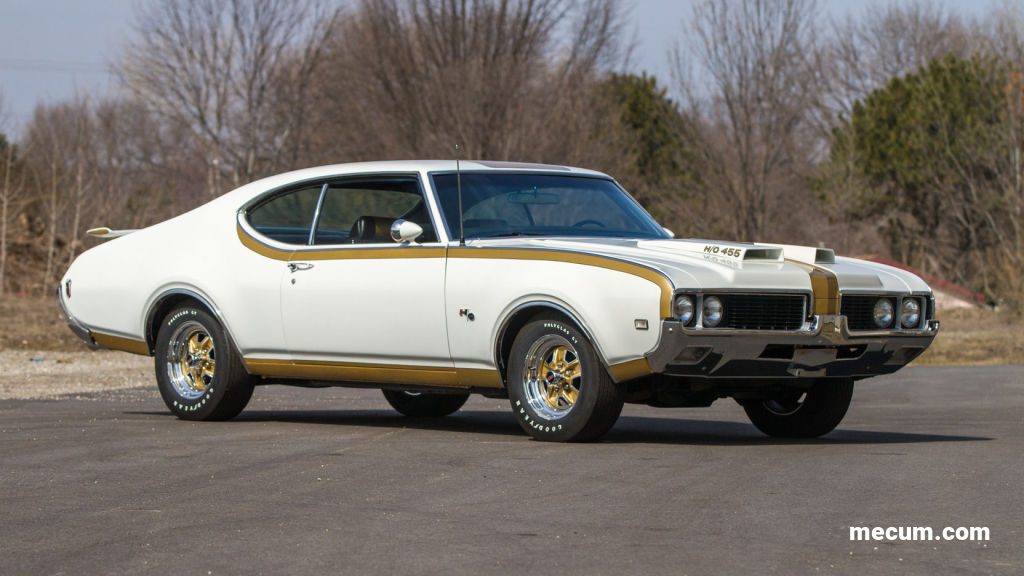
The Hurst/Olds and 442 were high-performance Oldsmobile Cutlass variants with key differences: 1) Hurst/Olds collaborated with Hurst Performance, while the 442 was a pure Oldsmobile product. 2) Hurst/Olds had limited production numbers, making it rarer and more collectible than the more widely available 442. 3) Hurst/Olds featured unique performance upgrades, like the Hurst Dual/Gate shifter and special wheels. 4) Distinctive paint schemes and badging set the Hurst/Olds apart from the 442. 5) In some years, Hurst/Olds offered more powerful engine options, like the 455 CID V8, for increased horsepower and torque.
The term “442” in Oldsmobile refers to the company’s muscle car model that was produced between 1964 and 1980. The name is derived from the car’s original specifications, which included a 4-barrel carburetor, 4-speed manual transmission, and Dual exhaust.
The rarest Oldsmobile 442 models were the four-door sedans built during the first year of production in 1964. Oldsmobile only made a small number of these cars, with only ten reported to have been produced. Out of these ten, three were F-85 4-Door Sedans, and seven were F-85 Deluxe 4-Door models. While they may not be considered desirable by some, they are exceptionally rare and unusual.
The various Oldsmobile 442 body styles included 1) Club Coupe with a small rear window and a B-pillar for structural support, 2) Sport Coupe featuring a sleek, sporty design with bucket seats and a center console, 3) pillarless Hardtop (including F-85 Hardtop and Holiday) without a B-pillar for an unobstructed view when windows are down, 4) Supreme trim offering luxury features and upgraded interior materials, and 5) Cutlass S trim, which typically had performance upgrades and sporty exterior styling elements.
Take Our Poll!
Oldsmobile 442
"*" indicates required fields
Ryan
Ryan has owned muscle cars since 1986 and currently owns a 1972 Dodge Charger Rallye. He combines passion and experience to create engaging content for fellow muscle car enthusiasts. In 2018, he founded Muscle Cars Illustrated, authoring hundreds of articles on tips, history, and trends in the muscle car industry. He attends national car shows, auctions, and museums to stay current with the latest developments in the muscle car industry.